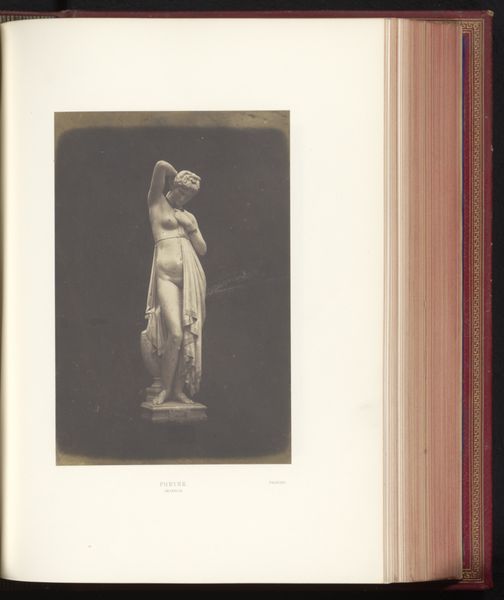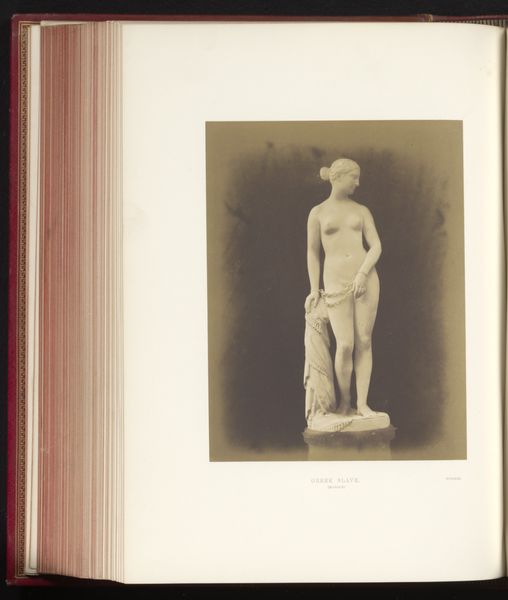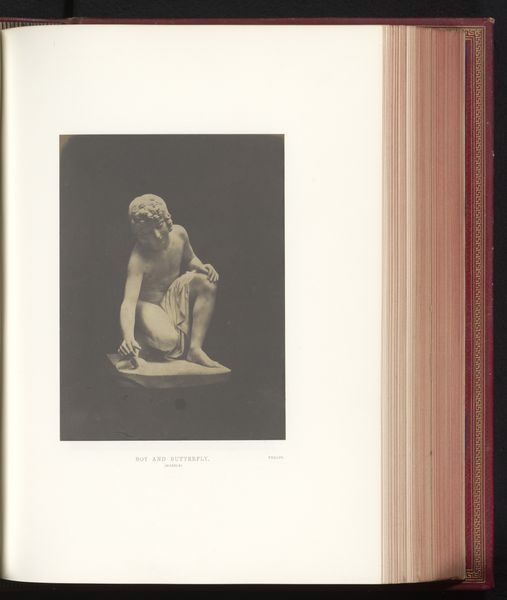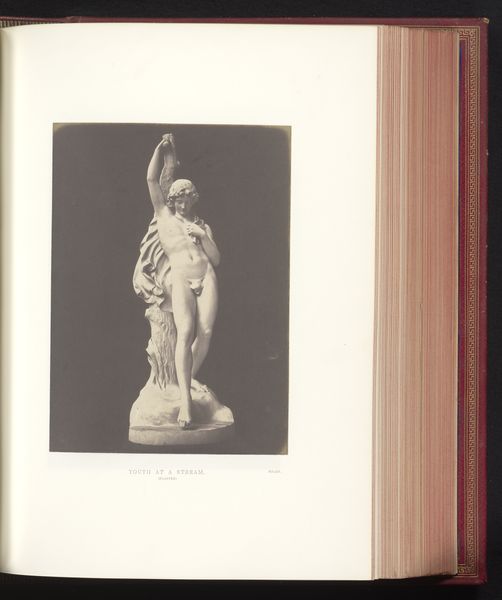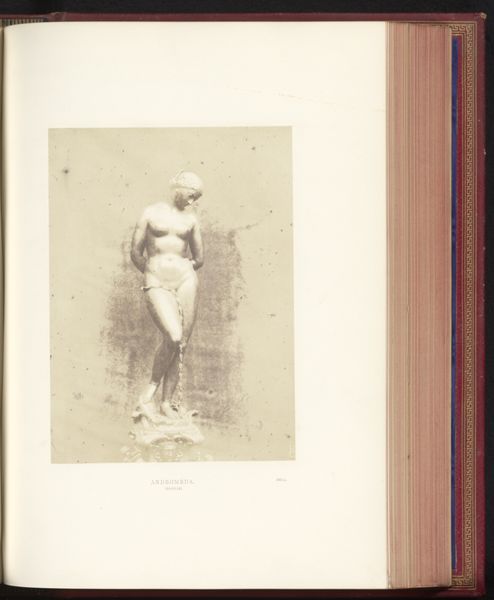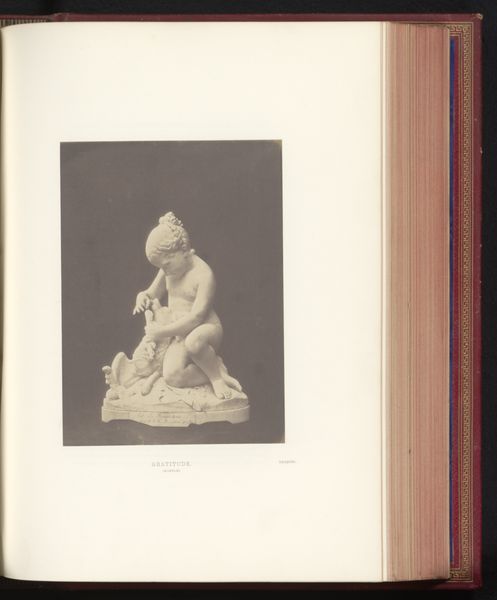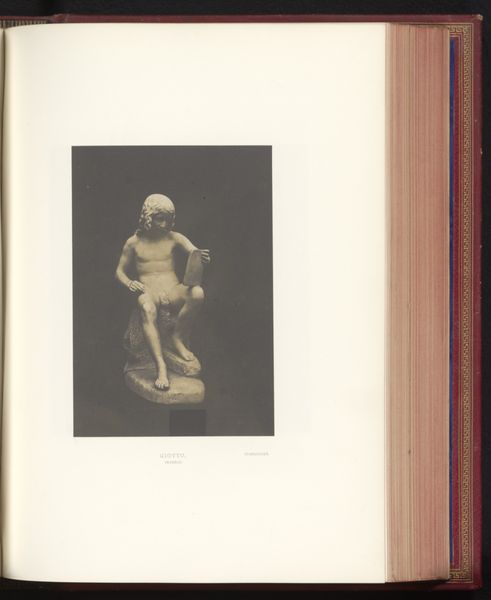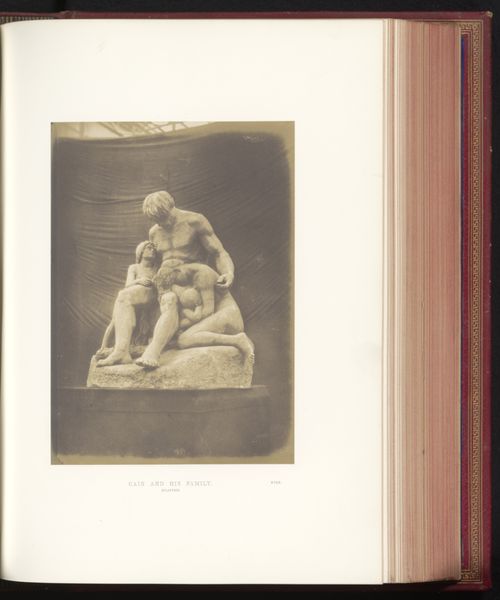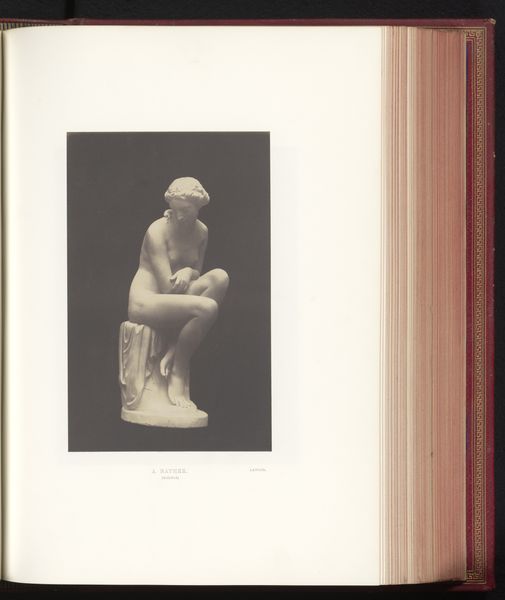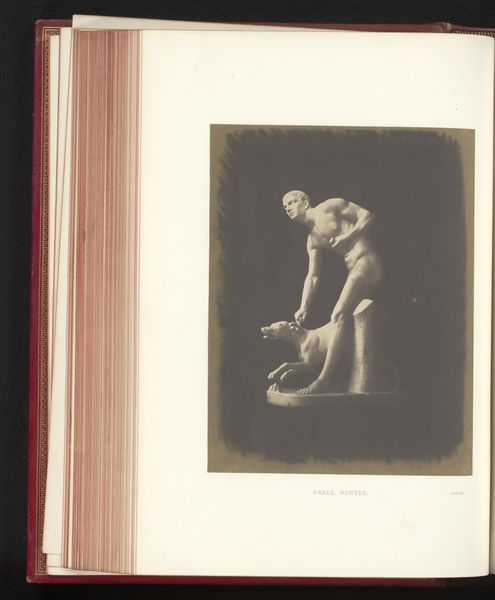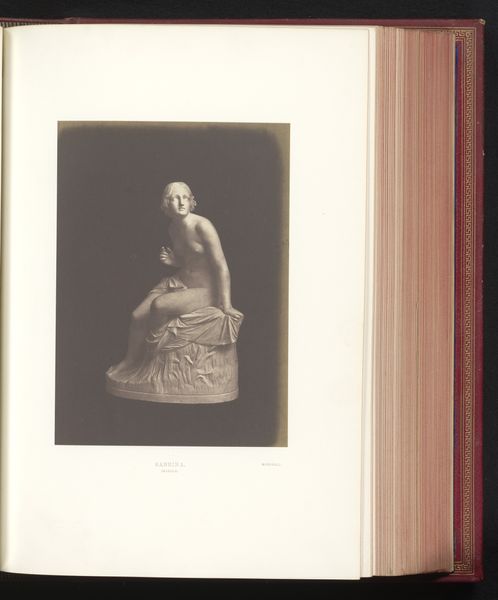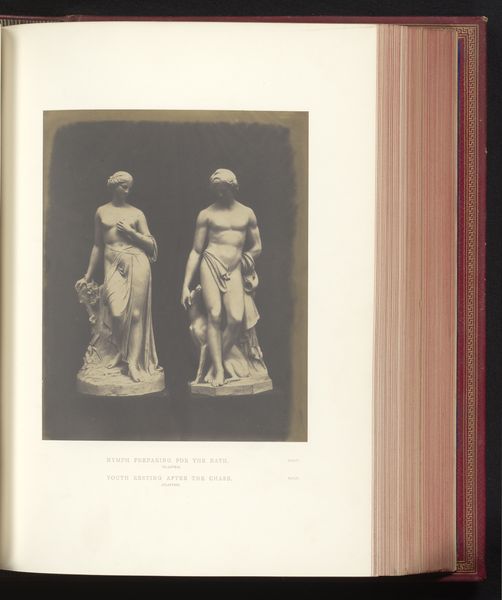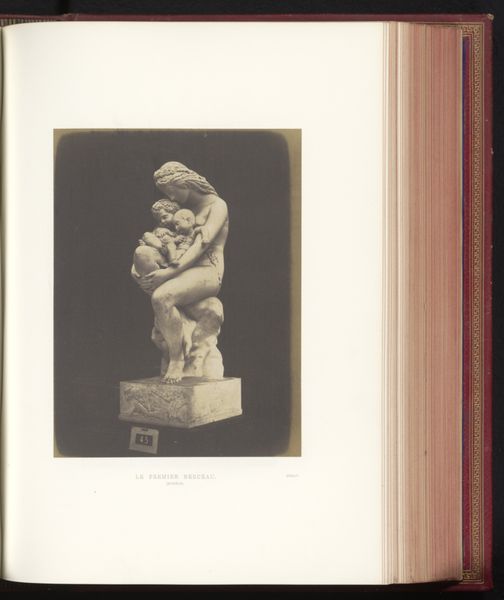
Sculptuur van een zittende Susanna tentoongesteld op de Great Exhibition of the Works of Industry of All Nations van 1851 in Londen 1851
0:00
0:00
daguerreotype, photography, sculpture, marble
#
portrait
#
neoclacissism
#
daguerreotype
#
figuration
#
photography
#
sculpture
#
carved
#
history-painting
#
marble
#
nude
#
realism
Dimensions: height 208 mm, width 158 mm
Copyright: Rijks Museum: Open Domain
This photograph captures an anonymous sculpture of a seated Susanna, displayed at the Great Exhibition in London, 1851. It's a curious thing isn’t it, to see this representation of Susanna, a biblical figure known for her unjust accusation and trial for adultery, showcased at an exhibition celebrating industry and progress. Susanna's story has long been a subject in art, often depicting her vulnerability and the male gaze. Here, the sculpture embodies 19th-century ideals of female beauty and virtue, yet also hints at the complex dynamics of power and gender within Victorian society. It makes me wonder, in the context of the Great Exhibition, was Susanna's story a cautionary tale about female virtue, or a symbol of resilience against injustice? What does it mean to exhibit a sculpture of a woman known for being victimized by male voyeurism, in a space designed to celebrate human achievement? How do you feel as you think about that?
Comments
No comments
Be the first to comment and join the conversation on the ultimate creative platform.

